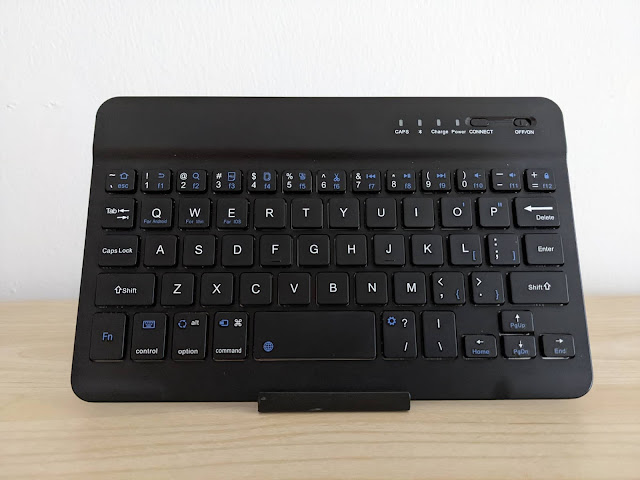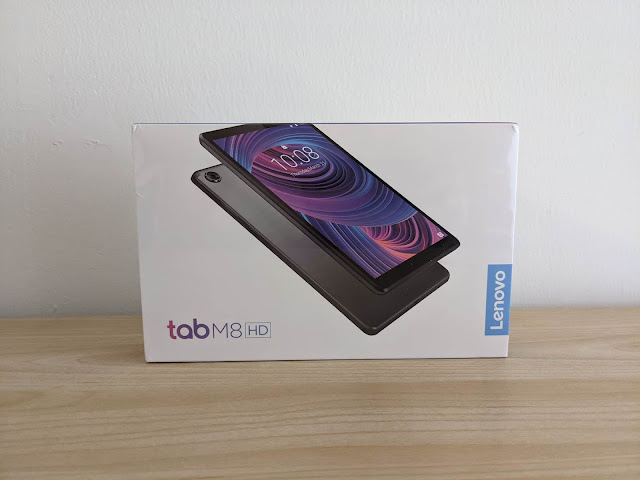Why I Started Blogging on Blogger
Hello again, web!
This post ends a journey in search of a new online home for my thoughts and begins a new blogging journey.
The first journey started with the demise of Google+, which had been my daily social home base and publishing platform for almost 8 years. I was crushed when Google shut it down on April 2, 2019.
As a new self-published author I was planning to eventually set up an email newsletter focusing on some of my interests and passions. And I still wanted to publicly share my thoughts and experiences in long form in a way similar to what I did on Google+. But what other platform could fill its big shoes?
Anything Facebook is a deal breaker for me and, although there are some platforms for Google+ refugees that are getting some attention, such as MeWe and Pluspora, they didn’t seem a good fit for my needs. These social networks are walled gardens and content isn’t publicly available on the open web, a Google+ feature I loved and still wanted. And besides, If I had to use a social platform, this time I wanted a mainstream, non-obscure one.
Therefore, for the time being I decided to stick with Twitter, which I had been using for well over a decade. I also went back to Reddit where I’m mostly a lurker because the community is, well, uninviting at times.
I could use Twitter for short posts but what about long-form content?
As a Google enthusiast the most logical choice would have been Blogger but, given what had just happened to Google+ and the lack of significant updates and improvements to Blogger, I didn’t trust Google to keep the platform around. What about WordPress? It’s an awesome tool but it’s overkill for my needs and requires too much maintenance for my tastes.
Medium is popular, has a great community, and may be a good option but it doesn’t resonate with me. Maybe it’s because, in its struggle for a viable monetization strategy, part of the content is behind a paywall, or because of the constant nags to register or subscribe. I just don’t like Medium much but I have an account and I thought I might as well use it in some way.
In early May 2019 I set up a blog on Micro.blog and started another blogging journey.
Why Micro.blog? First off, it’s not a walled garden and, by design, content stays on the open web. And one of the key themes underlying IndieWeb platforms is the re-discovery of and the focus on blogging.
Micro.blog supports a range of post types, from short tweet-like posts to long-form content that can be cross-posted to Twitter and Medium as I initially set it up to do. There are other features I liked, such as simplicity that doesn’t sacrifice versatility, and Markdown support. Finally, Micro.blog has a passionate and active founder committed to developing and improving the platform.
Wait, didn’t I say I no longer wanted a social platform? Although there’s support for following, commenting, and tagging, Micro.blog is first and foremost a microblogging platform and its social features are almost incidental and designed to enhance blogging.
The main limitation of Micro.blog involves something I take for granted in any contemporary online publishing platform, adding images to posts. You can add images to Micro.blog posts. But you have to manually take care of formatting the images to keep the page layout responsive, such as creating and uploading appropriate thumbnails and adding the necessary HTML and CSS code. It’s like a throwback to the early 1990s web when we had to write all the HTML.
Some macOS and iOS Micro.blog clients handle most of the process of adding images to posts. But, ironically for an IndieWeb platform, these better features are available only for a silo ecosystem such as Apple’s and not on the open web.
Another major limitation is that only the users with tools supporting IndieWeb technologies can leave comments on blogs hosted at Micro.blog.
I still highly recommend Micro.blog, for what it was designed for. But in early July 2019, a couple of months after joining it, I decided to set sail again and look for another blogging platform.
But there was still a big unknown.
Is Blogger going to stick around? Will Google kill it? This was a concern given the Google+ experience was still fresh. I considered this and came to the conclusion the risk acceptable, for a couple of reasons.
The first is on August 23, 2019 Blogger turns 20. The platform spent 16 years of its life under Google, twice as much as Google+. And it’s even older than Gmail.
A consequence of such a long existence, and this is the other reason why I’m not overly concerned, is there’s safety in numbers. There’s a huge amount of Blogger blogs and a large fraction of them, some of which highly popular, have tons of posts. If Google killed Blogger it would wipe a significant portion of the web and would have to face the consequences.
I convinced myself there were no major risks of moving to Blogger.
So here I am. I finally have a new online home from which I’m starting yet another blogging journey.
This post ends a journey in search of a new online home for my thoughts and begins a new blogging journey.
 |
| The home page of Google Blogger. |
The first journey started with the demise of Google+, which had been my daily social home base and publishing platform for almost 8 years. I was crushed when Google shut it down on April 2, 2019.
As a new self-published author I was planning to eventually set up an email newsletter focusing on some of my interests and passions. And I still wanted to publicly share my thoughts and experiences in long form in a way similar to what I did on Google+. But what other platform could fill its big shoes?
Why not a social platform
I no longer wanted a social network as my main online presence.Anything Facebook is a deal breaker for me and, although there are some platforms for Google+ refugees that are getting some attention, such as MeWe and Pluspora, they didn’t seem a good fit for my needs. These social networks are walled gardens and content isn’t publicly available on the open web, a Google+ feature I loved and still wanted. And besides, If I had to use a social platform, this time I wanted a mainstream, non-obscure one.
Therefore, for the time being I decided to stick with Twitter, which I had been using for well over a decade. I also went back to Reddit where I’m mostly a lurker because the community is, well, uninviting at times.
I could use Twitter for short posts but what about long-form content?
Why not a mainstream blogging platform
After the long Google+ experience I felt I wanted to resume blogging. I have had two blogs and later used Google+ mostly as a blog anyway, or perhaps as a tumblelog.As a Google enthusiast the most logical choice would have been Blogger but, given what had just happened to Google+ and the lack of significant updates and improvements to Blogger, I didn’t trust Google to keep the platform around. What about WordPress? It’s an awesome tool but it’s overkill for my needs and requires too much maintenance for my tastes.
Medium is popular, has a great community, and may be a good option but it doesn’t resonate with me. Maybe it’s because, in its struggle for a viable monetization strategy, part of the content is behind a paywall, or because of the constant nags to register or subscribe. I just don’t like Medium much but I have an account and I thought I might as well use it in some way.
The Micro.blog interlude
Then, at the end of April 2019, I stumbled upon a post on Jay Hoffmann’s site The History of the Web linking to Jeffrey Zeldman’s post Nothing Fails Like Success. Jeffrey’s post mentioned Micro.blog as a leading example of an IndieWeb tool. I was intrigued, checked out Micro.blog, and fell in love with it.In early May 2019 I set up a blog on Micro.blog and started another blogging journey.
Why Micro.blog? First off, it’s not a walled garden and, by design, content stays on the open web. And one of the key themes underlying IndieWeb platforms is the re-discovery of and the focus on blogging.
Micro.blog supports a range of post types, from short tweet-like posts to long-form content that can be cross-posted to Twitter and Medium as I initially set it up to do. There are other features I liked, such as simplicity that doesn’t sacrifice versatility, and Markdown support. Finally, Micro.blog has a passionate and active founder committed to developing and improving the platform.
Wait, didn’t I say I no longer wanted a social platform? Although there’s support for following, commenting, and tagging, Micro.blog is first and foremost a microblogging platform and its social features are almost incidental and designed to enhance blogging.
Back to the drawing board
After a positive first impression, something didn’t click with Micro.blog as I started hitting the wall of its limitations. I realized the platform missed some key features and didn’t support well the kind of medium to long form technical content I was interested in and wanted to publish. Moreover, its design principles and evolution made it unlikely it would add support for what I wanted.The main limitation of Micro.blog involves something I take for granted in any contemporary online publishing platform, adding images to posts. You can add images to Micro.blog posts. But you have to manually take care of formatting the images to keep the page layout responsive, such as creating and uploading appropriate thumbnails and adding the necessary HTML and CSS code. It’s like a throwback to the early 1990s web when we had to write all the HTML.
Some macOS and iOS Micro.blog clients handle most of the process of adding images to posts. But, ironically for an IndieWeb platform, these better features are available only for a silo ecosystem such as Apple’s and not on the open web.
Another major limitation is that only the users with tools supporting IndieWeb technologies can leave comments on blogs hosted at Micro.blog.
I still highly recommend Micro.blog, for what it was designed for. But in early July 2019, a couple of months after joining it, I decided to set sail again and look for another blogging platform.
Why Blogger
The most obvious alternative remained Blogger, which combines all the features I want with convenience and low-friction.But there was still a big unknown.
Is Blogger going to stick around? Will Google kill it? This was a concern given the Google+ experience was still fresh. I considered this and came to the conclusion the risk acceptable, for a couple of reasons.
The first is on August 23, 2019 Blogger turns 20. The platform spent 16 years of its life under Google, twice as much as Google+. And it’s even older than Gmail.
A consequence of such a long existence, and this is the other reason why I’m not overly concerned, is there’s safety in numbers. There’s a huge amount of Blogger blogs and a large fraction of them, some of which highly popular, have tons of posts. If Google killed Blogger it would wipe a significant portion of the web and would have to face the consequences.
I convinced myself there were no major risks of moving to Blogger.
So here I am. I finally have a new online home from which I’m starting yet another blogging journey.


